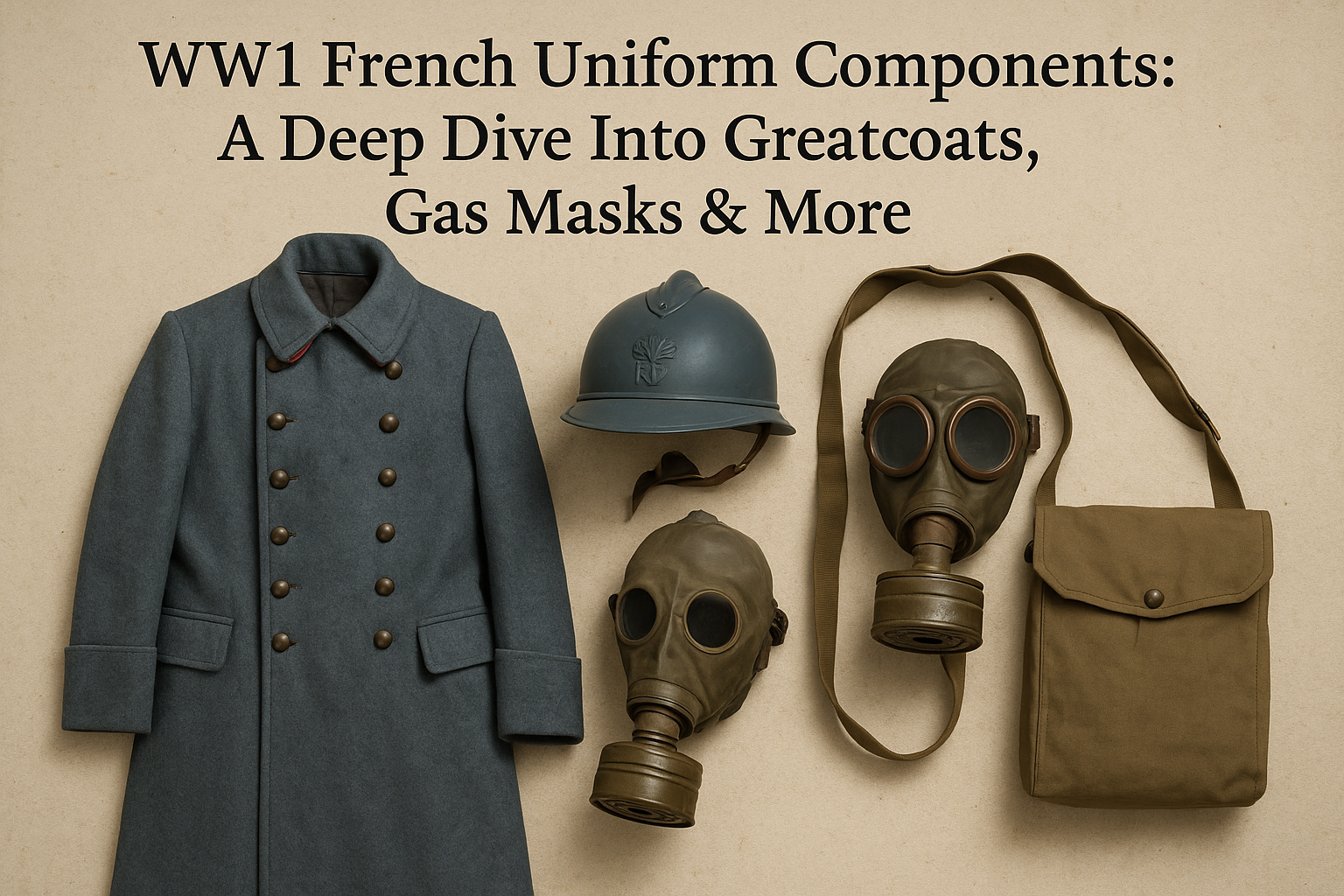
WW1 French Uniform Components: A Deep Dive Into Greatcoats, Gas Masks & More
Published on Jul 01, 2025
WW1 French Uniform : A Journey Through Military History
The First World War revolutionized warfare and the attire soldiers wore. French uniforms from WWI, in particular, underwent dramatic changes from 1914 to 1918. Functionality, camouflage, and protection drove the evolution of these garments, replacing the once decorative with the practical. Whether you're a historian, reenactor, or collector, understanding the components of a WW1 French uniform is essential.
1. The Iconic French WW1 Coat: The Greatcoat
At the core of the French soldier's wardrobe was the French WW1 greatcoat, known in French as the capote. Initially designed in a sky-blue hue called "horizon blue," it offered visibility on the battlefield—a choice later seen as impractical for trench warfare.
Key Features:
- Material: Heavy wool for warmth during brutal winters
- Color: Horizon blue replaced traditional red trousers and kepis for better battlefield camouflage
- Design: Double-breasted with shoulder epaulettes and a standing collar
- Function: Served both as protection from the elements and an identifier of rank and unit
These coats are now sought-after collector’s items, with genuine French WW1 coats available through specialized military uniform vendors like Paddelaters.com.
2. Evolution of French Military Helmets
French soldiers wore cloth kepis early in the war—a bold but vulnerable headgear. By 1915, the famous Adrian helmet was introduced. It featured a crest and provided crucial shrapnel protection.
- Material: Pressed steel
- Color: Horizon Blue (later darkened for practicality)
- Use: Set the precedent for many modern military helmets
The Adrian helmet is an important part of the French WW1 uniform and is widely replicated or preserved in collector’s archives.
3. World War 1 Gas Masks: Protection Against a New Kind of Warfare
The use of chemical weapons in WW1 introduced a horrifying new element to war—gas attacks. Like other nations, France developed rudimentary but evolving gas masks to counteract this.
Types of Gas Masks Used:
- Early Versions: Simple cotton pads soaked in anti-gas solution
- Later Models: Full head-covering masks with charcoal filters
These gas masks became essential components of the soldier’s uniform. Whether you're interested in a WWI US gas mask, a German gas mask WWI, or a French variant, each tells the story of a race against death during trench warfare.
Related Pages:
- WWI US Gas Mask
- German Gas Mask WWI
Today, World War 1 gas masks for sale are highly prized collectibles, especially when they come with original filter canisters and carrying bags.
4. Footwear: Boots Built for Trenches
French soldiers wore hobnailed boots designed for rugged terrain. Unlike the lightweight combat boots, these were heavy, durable, and essential for trench life.
Features:
- Material: Leather with iron hobnails
- Functionality: Prevented slipping and added longevity
Boots often came with puttees (cloth wraps) for ankle support and additional warmth.
5. Uniform Tunics and Trousers
Besides the greatcoat, the standard uniform included a tunic (veste) and trousers (pantaloons).
- Tunics: Made of wool, buttoned up to the neck, with pockets for gear
- Trousers: Also woolen, dyed horizon blue post-1915
- Rank Identification: Embroidered insignia on sleeves or collars
The French military paid great attention to detail; even field uniforms carried French pride and distinction elements.
6. Load-bearing equipment and Webbing
The gear carried by WW1 soldiers was not just practical—it was essential to survival.
Included:
- Bread bag
- Canteen
- Ammunition pouches
- Bayonet and scabbard
The layout was often custom to the soldier’s role but remained consistent in balancing weight and accessibility. These are also highly collectible items today.
7. Why Collect WW1 French Uniform Components?
Collectors, museums, and reenactors are drawn to WWI French uniforms because of their unique style, history, and craftsmanship blend.
Reasons to Collect:
- Historical Value: Tangible connection to the Great War
- Craftsmanship: Durable, hand-made construction
- Rarity: Especially for authentic items in good condition
Paddelaters.com has a curated collection of original and replica French WW1 coats, WWI gas masks, and other accessories to complete any authentic ensemble.
8. Tips for Authenticating and Purchasing
When purchasing World War 1 collectibles, especially uniforms or gas masks, keep these in mind:
- Provenance: Ask for history or certification
- Condition: Mint condition items fetch higher value
- Details: Original stitching, labels, and materials matter
Paddelaters.com specializes in military apparel with a keen eye on historical accuracy and collector authenticity.
Conclusion
WWI French uniform components are not just pieces of fabric and metal—they’re fragments of history. From the robust French WWI coat to the life-saving World War 1 gas mask, each item offers a glimpse into the soldier’s experience on the Western Front.
Whether starting your collection, building a reenactment outfit, or educating others, these components offer a tangible connection to one of history's most pivotal moments. Visit Paddelaters.com today to explore our full range of authentic WW1 gear.
